HOʻŌLA ʻĀINA, HOʻŌLA LĀHUI - HEALTHY LAND, HEALTHY PEOPLE
Over the years, we have witnessed the physical well-being of many interns improve during their time at MAʻO. In 2017 we set out to investigate the connection between health and the MAʻO experience, embarking on an incredible, ongoing learning journey.
In partnership with Dr. Alika Maunakea of the University of Hawaiʻi John A. Burns School of Medicine (JABSOM) and Dr. Ruben Juarez of the UH Economic Research Organization (UHERO), we initiated the Mauli Ola study to assess MAʻO’s impact on interns’ physical health, and to examine the relationship between ʻāina and ola within social networks.
Initial Results
Results thus far resoundingly affirm our lived experience that interns improve their health while at MAʻO. Of the initial study cohort, 62% of youth were found to be diabetic or pre-diabetic at baseline (a particularly distressing finding for youth just 17-24 years old); by year’s end this had dropped to 30%. In other words, 60% of interns reduced their risk of contracting Type II diabetes within a year at MAʻO.
“This is a powerful illustration of the concept that food is medicine - and that this medicine is best administered in and by the community”
Through the study’s gut microbiome analysis, we have gotten a fascinating look into the biological mechanism of change underlying these significant health improvements. Simply put: MAʻO interns consume more vegetables, which drives a change in their microbiome, particularly an increase in the population of butyrate-producing bacteria; this results in better glycemic control, which yields a reduced risk of contracting Type II diabetes.
Just as radically, it has started to reveal the social mechanism of change that underlies this physical transformation. While youth connect with each other and the ʻāina at MAʻO, they marinate in a culture where healthy food is celebrated, prepared and eaten together; together they exert a powerful positive influence on each other and their social networks, driving behavioral change that ripples through the community.
THE CONTEXT
Troubling Health Disparities
Chronic cardiometabolic diseases such as diabetes are far more prevalent in Waiʻanae than in other regions, and are particularly severe among Native Hawaiians and Pacific Islanders. For example, 15% of Waiʻanae residents suffer from diabetes, compared to 10% statewide. In a terrible self-perpetuating cycle, these health outcomes are exacerbated by and contribute to the community’s intergenerational socio-economic disparities, including poor educational attainment and high rates of poverty.
Study Design
The cohort:
MAʻO interns, staff, and their social networks, plus a control group. Participation from YLT Cohorts 12-13.5 cohort totaled 71 individuals, with a median age of 18 years old, 70% of whom are Native Hawaiian.*
Biometric analysis:
Body mass index (BMI), A1C (blood sugar levels, a diabetes predictor) and gut microbiome composition.
Socio-economic analysis:
Demographics, social network relationships and influence, and health behaviors.
Timeline:
Comparing baseline and one year follow up results.
Results
Program Implications: Let’s Eat!
The Mauli Ola data has inspired us to dig deeper, learn more and refine our programming to continue building youth and community well-being. All interns now engage in holistic health curriculum on the farm and visit the Maunakea lab at JABSOM to see this science in action. Youth and staff also cook and eat together every Friday - broadening our palates, learning new recipes, and partaking in the joy of shared meals.
Power of the Social Network
The study is revealing much about the role that social networks play in behavior and health outcomes, and thus how MAʻO influences both direct participants and the surrounding community. Initial results demonstrate the clustering of diabetes prevalence is particularly strong for individuals under the age of 25, friends and siblings, and Native Hawaiians. Study participants’ self-reporting about their susceptibility to influence also highlights that youth are most likely to change their habits due to peer influence, affirming that youth are indeed powerful agents of change.
CLUSTERING OF DIABETES WITHIN SOCIAL NETWORKS
This is the first map of social networks and diabetes risk in Hawaiʻi, with links depicting the social relationships between individuals. The data illustrates the clustering within social networks by risk for diabetes.
ECONOMIC IMPLICATIONS
Individuals free of chronic disease earn more over the course of their careers, contributing to their families’ economic well-being. They also cost society less: for every individual who avoids contracting type 2 diabetes, the healthcare system avoids $11,135 per person per year of diabetes care costs alone.


